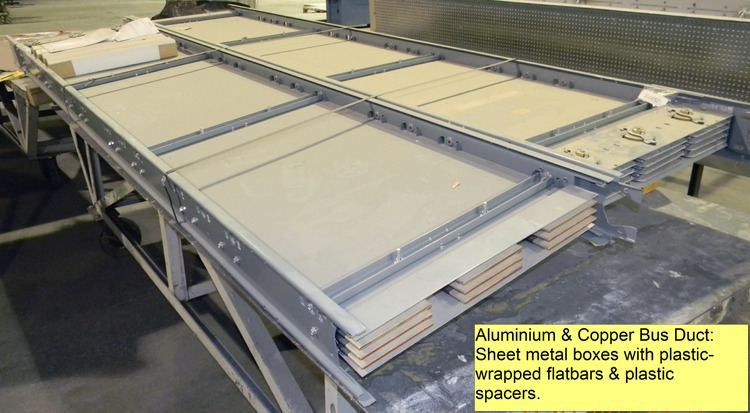 | ||
In electrical power distribution, a bus duct (also called busway), is a sheet metal duct containing either copper or aluminium busbars for the purpose of conducting a substantial current of electricity. It is an alternative means of conducting electricity to power cables or cable bus.
Similar to cable tray, bus ducts have thicker, cold-formed steel side rails and thinner sheet metal coverings. Busbars inside may be separated with distinct and even gaps between them, or “sandwiched” together.
Typically, individual busbars are wrapped or coated with a non-conducting, covalent material, such as plastic or (in older systems) electrical tape.
At the connection point, busbars flare out to enable connection to the next segment.
Use and application
Bus ducts are used in commercial and industrial settings, both indoors and outdoors. Manufacturers deliver them assembled in large segments for electrical contractors to connect and support.
Bus ducts are building service penetrants that are required to be externally firestopped where they penetrate fire separations required to have a fire-resistance rating. Any internal firestops that are supplied by the manufacturer may be tested as integral components to either UL857 or IEEE C37.23 for North American models, and then via ASTM E814, UL1479 or ULC-S115. Bus duct-internal firestops mitigate the transmission of internal fires, smoke and heat between fire compartments through the combustion of bus duct-internal covalent wrappings, spacers and brackets.
